Double Oscar-winning special effects supervisor Neil Corbould is Bafta-nominated this year for both Mission: Impossible — Dead Reckoning and Napoleon. He tells Mark Salisbury about how his team staged two key scenes in each film
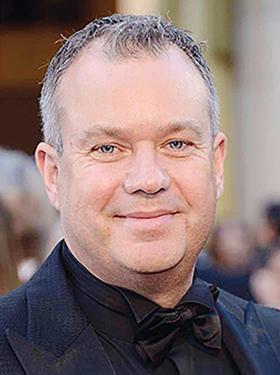
On January 23, UK special effects supervisor Neil Corbould joined a select club by being nominated for three Academy Awards in the same category in the same year, for his work on The Creator, Napoleon and Mission: Impossible — Dead Reckoning. “It was a bit of a surprise,” says Corbould, who previously won special visual effects Oscars for Gladiator and Gravity. “Apparently it’s only happened in music and sound before.”
At the Baftas, Corbould is listed for just Napoleon and Mission: Impossible — Dead Reckoning despite The Creator also being nominated for special visual effects, after splitting the Bafta/Oscar nomination with a colleague. “I gave him the option of the Bafta and I kept hold of the Oscar nomination,” says Corbould, who won Baftas for Gravity, Saving Private Ryan and The Fifth Element.
Mission: Impossible — Dead Reckoning is Corbould’s second time working for Tom Cruise and director Christopher McQuarrie on a Mission: Impossible film, following 2018’s Fallout, while Napoleon is his seventh film for Ridley Scott. Currently in Malta wrapping up work on his eighth Scott collaboration Gladiator 2, Corbould talks through four pivotal scenes from his awards-nominated films: two from Mission: Impossible — Dead Reckoning, two from Napoleon.
Mission: Impossible — Dead Reckoning
Ethan and Grace are chased in a Fiat 500
The scene: Attempting to elude the many and various parties out to get them, Impossible Mission Force agent Ethan Hunt (Tom Cruise) and jewel thief Grace (Hayley Atwell) commandeer a supercharged Fiat 500 and set off across Italian capital Rome.
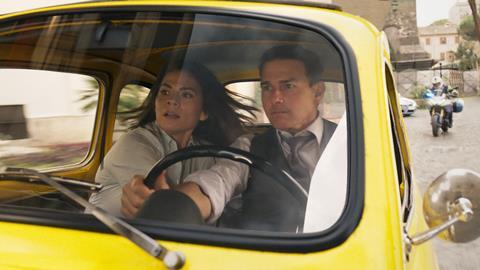
Neil Corbould: “Working with Tom and McQ [Christopher McQuarrie] is quite a process, and a great process because Tom’s very involved with the day-to-day running and concepts of all the stunts and special effects. The Fiat chase sequence started off as a comical moment where instead of them getting a Ferrari or a Lamborghini, this old Fiat 500 jumped out at them. It had a 700cc engine or something like that, so we came up with the idea of putting in an electric motor from a Tesla, which was a bit more horsepower than we needed, but it seemed like a good idea. This thing did 0-60mph in about two seconds. It was supersonic. When we showed Tom and McQ, they loved it and designed the script around the car. It was almost like a character in the movie.
“We had to make another two, so we had three high-powered ones in case we smashed any. And we could put different camera rigs on them, one had side mounts, one front, another on the back. It saved on rigging time so you got out of one car and into the next, for the next part of the sequence. We had others that were more shells: one for going down the Spanish steps, one to roll over. We had a tumbling rig, so it tumbled down the steps with Tom and Hayley inside. We built an oversized one for that because, as you can imagine, it was quite tight in there. We made it 10% bigger, and it was padded so we didn’t injure the actors.
“We built a section of the Spanish Steps on the backlot at Longcross Studios [in Surrey]. We built the balcony, the first part of the steps and almost all the bottom part. The rest of it’s CG. We shot some on the location, but a lot of it is a composite. And then with the military vehicle [driven by Pom Klementieff’s Paris], we shot that off the top steps with a nitrogen cannon. It hit right where McQ wanted it, and as it came down the wheels turned in just the right direction. It was more luck than judgment, but it gave you a perfect cut for the next part of the chase.”
The train scene climax
The scene: Ethan and Grace try to escape through various carriages of a steam train that is teetering on the edge of a cliff and is falling, one carriage at a time, into the gorge far below.
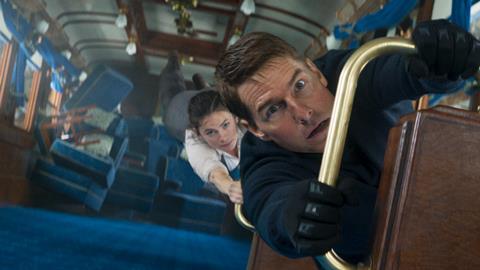
Corbould: “The train sequence took a year to plan. We started with a train going down a track, and then they said, ‘It would be great if we could blow up a bridge and run the train off. But we can’t buy a train. Can’t do it with a real train. So let’s build one.’ Then it just got bigger and bigger, with carriages going over the cliff. There were about seven different rigs we used — big rigs.
Tom doesn’t do anything by half. He doesn’t want half a train and CG the rest of it. He wants an 80-foot carriage going 30 degrees this way, 30 degrees that way, on a big three-axis gimbal. And wanted it to go vertical, so that meant another rig.
“We built an 80-foot train carriage, keeping it as light as we could, but it still weighed probably 35 tons, and we put it up upright with Tom hanging in the middle of it. Then we built another carriage for interiors/exteriors, because one of them had to be a kitchen car, and we repurposed that so they could run across its roof. We also built what we called the vestibule rig, which was two carriage ends on a big pivot, for whenever they transferred from one carriage to the next. The vertical carriage was a 90-degree rig which we mainly used for the bar car, with a big grand piano hanging for real. We rigged everything on the level, then once we got to the top, where Tom’s hanging off with Hayley, it was vertical.
“To shoot the scene was a mishmash of different techniques, with visual effects putting in the background outside and with big input from Wade Eastwood, the second unit director/stunt co-ordinator. Wade is a very integral part of the Mission films. We had some real furniture but couldn’t use too much because Tom was in there and something hitting him from 40 feet up would hurt him quite badly. So we dropped some green foam pieces to help with his reactions. The grand piano was stripped down to make it as light as we could, but it was still a proper carcass and weighed a couple of hundred kilos. We had that on a rail so it could only go so far. Then visual effects took it over and finished the destruction.
“What I love about working with Tom and McQ is the passion they have for getting stuff in camera. Over the years, certain directors have gone the CG route, but it’s nice that it’s coming back to doing as much practically, with CG helping out.”
Napoleon
Battle of Austerlitz, 1805
The scene: Napoleon (Joaquin Phoenix) faces off against the combined might of the Russian Imperial and Austrian armies, at the Battle of Austerlitz. Little do they know that Napoleon has laid a trap, as the armies march across a snow-covered ice lake towards the French.

Corbould: “Ridley’s like a general marshalling the army. He finds a location, they lidar [light detection and ranging] scan the location, then they build a perfect miniature replica of it. He does a battle plan and works the shots out, then goes off and storyboards it as well. So when you get these amazing storyboards, you know exactly what he wants in the shot. If there are five cannons in the [storyboard], he wants five cannons. He doesn’t want any more or any less.
“We scouted different locations for the sequence with [production designer] Arthur Max, and came up with Bourne Wood in Farnham [Surrey], which is where we shot Gladiator. There’s a perfect outcrop that overlooks a field, so that was the top part of Napoleon’s lookout sorted. But we knew the bottom elevation, the frozen lake, was going to be somewhere else. We found an airfield at Abingdon [Oxfordshire], where I also shot [2024 Apple TV+ miniseries] Masters Of The Air. We flattened about 50 acres, compacted it, sprayed it white, then sprayed it with snow. You create a shoreline and that gives you the ice lake, because you don’t see what’s under the snow.
“We dug a [water] tank, probably 20 metres by 25 metres and about four feet deep, in the middle of the field, and filled it with water. There was a mechanism in the middle, so as people and horses ran over it we could release it and they’d fall in. We sunk eight four-foot-diameter concrete pipes into the ground, surrounding the tank, and put explosions in them. Ridley shoots with multiple cameras, so for something like that we had 12 cameras. He would ask: ‘Where are your bangs?’ I’d say, ‘There’s one here, one over there.’ And he’d position the cameras to capture this bit of action. He’d shoot maybe two takes, and then he’s got 20 takes worth [of footage]. He edits in his head. It’s such a unique way of working.
“For the shots in the water, we used a new stage at Pinewood where we built the underneath of the ice lake with a company called Snow Business. We shot practical cannonballs through the water as reference for visual effects, who then put many more in. We had sinking horses and sinking stuntmen, cracking ice. I think the sequence is one of the best in the movie. It’s so seamless with practical and visual effects, it’s very hard to pull out what was them and what was us.”
Battle of Waterloo, 1815
The scene: Napoleon is finally defeated by the Duke of Wellington at the Battle of Waterloo.
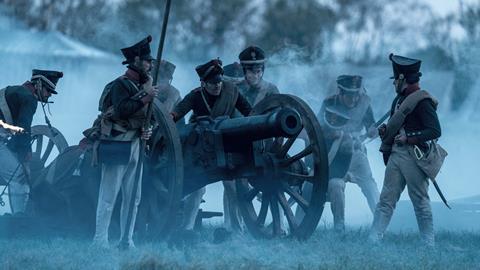
Corbould: “We did Waterloo in Churn in Oxfordshire. To get from the English side to the French side was a kilometre and a half. The first two days we were on the French side. The first day it was blowing a gale and we had horizontal rain, which suited the story. After the first couple of days it died down, so we had to recreate the rain and the wind.
“We built the cannons for the English and the French armies. And because of what happened [on the set of Rust] where the DoP was killed, everyone was very wary. So instead of firing black powder from the cannons, we fired talcum powder using compressed air. There was an air valve on the back of each cannon. It gave you this perfect plume that looked like smoke. The great thing about it is you could get people right in front of it and it wouldn’t hurt them. Then [visual effects supervisor] Charley Henley put the lovely flame on the front of it. It’s pretty seamless. I don’t think you can tell it’s not a real cannon. They were quick to reload as well.
“We did horses flipping over for Waterloo and the ice lake sequence. I first saw it used on Braveheart. Ridley liked certain elements of the Braveheart battles and we nicked the idea [for Gladiator] and brought it on more; the rigs got a bit more elaborate. We built the horses. We made dead horses as well, for the aftermath of the battle. We had 50 that you could place around the site, but they all had to be different. Some are lying on their right, some on their left. We made different legs for them so they don’t all look the same. A lot goes into a Ridley Scott battle.
“As the French troops were moving forward in formation, Ridley wanted the drummer boy to explode. Normally you do that as a CG element. And I said, ‘No, we can do it.’ We had designed these air cannons that we had sunk into the ground. But there was a sweet spot right in the middle, so when you step on top of the mechanism, it lets off the bang, but you’re safe in the middle of it — all the dust and debris is around you.
“When we first did the shot, Ridley thought we’d killed the drummer boy, and he went through the playback frame by frame — because there was just this massive explosion and then he disappeared. But he’d just laid down on the floor. As soon as we had done that, Ridley wanted to do it in different places and we did it a few times. Stunts love it because they can do it for real. Ridley loves it because it’s in camera.”













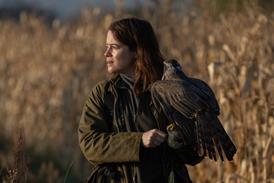

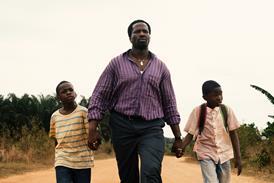







No comments yet